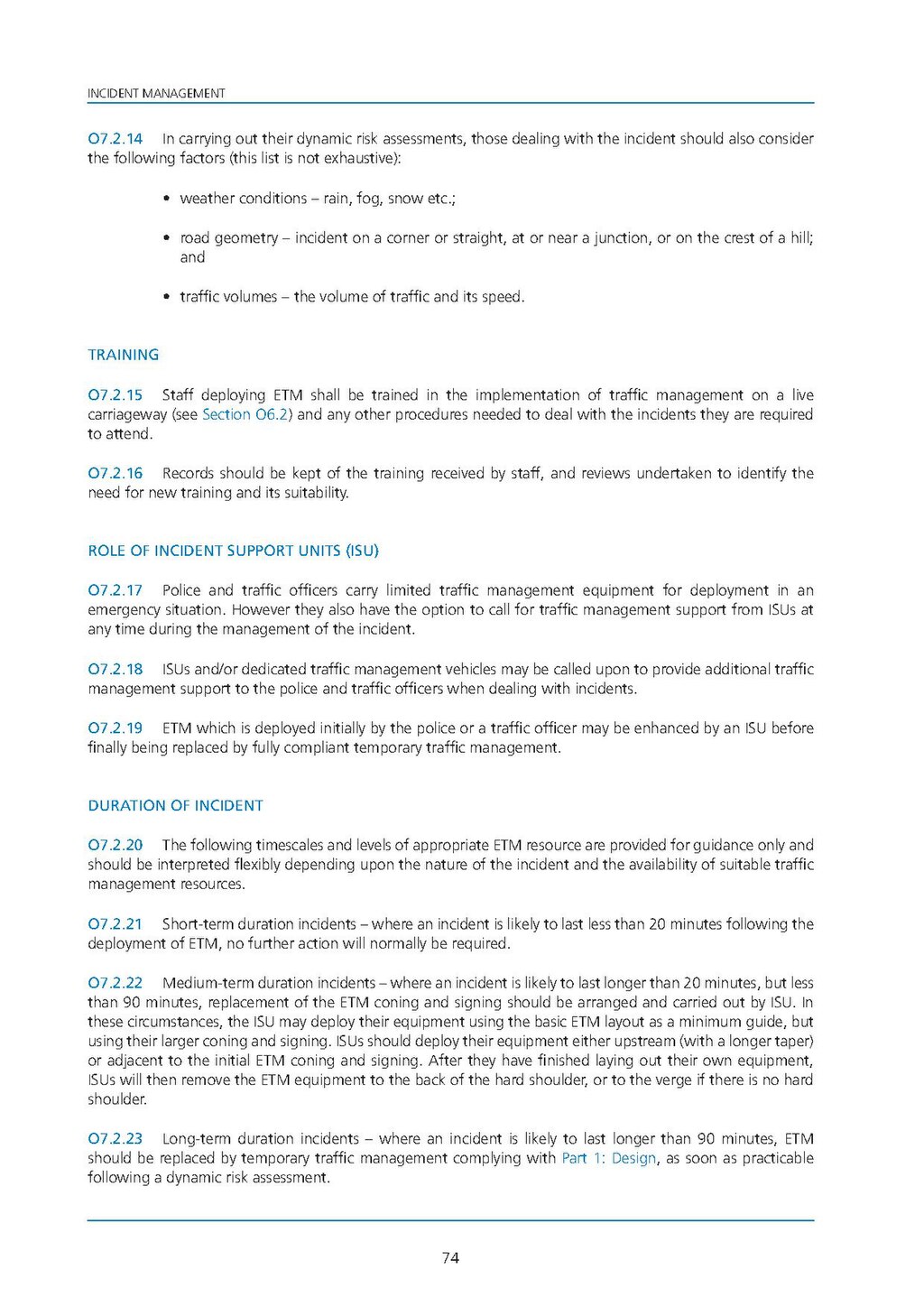O7.2.14 In carrying out their dynamic risk assessments, those dealing with the incident should also consider the following factors (this list is not exhaustive):
- weather conditions – rain, fog, snow etc.;
- road geometry – incident on a corner or straight, at or near a junction, or on the crest of a hill; and
- traffic volumes – the volume of traffic and its speed.
TRAINING
O7.2.15 Staff deploying ETM shall be trained in the implementation of traffic management on a live carriageway (see Section O6.2) and any other procedures needed to deal with the incidents they are required to attend.
O7.2.16 Records should be kept of the training received by staff, and reviews undertaken to identify the need for new training and its suitability.
ROLE OF INCIDENT SUPPORT UNITS (ISU)
O7.2.17 Police and traffic officers carry limited traffic management equipment for deployment in an emergency situation. However they also have the option to call for traffic management support from ISUs at any time during the management of the incident.
O7.2.18 ISUs and/or dedicated traffic management vehicles may be called upon to provide additional traffic management support to the police and traffic officers when dealing with incidents.
O7.2.19 ETM which is deployed initially by the police or a traffic officer may be enhanced by an ISU before finally being replaced by fully compliant temporary traffic management.
DURATION OF INCIDENT
O7.2.20 The following timescales and levels of appropriate ETM resource are provided for guidance only and should be interpreted flexibly depending upon the nature of the incident and the availability of suitable traffic management resources.
O7.2.21 Short-term duration incidents – where an incident is likely to last less than 20 minutes following the deployment of ETM, no further action will normally be required.
O7.2.22 Medium-term duration incidents – where an incident is likely to last longer than 20 minutes, but less than 90 minutes, replacement of the ETM coning and signing should be arranged and carried out by ISU. In these circumstances, the ISU may deploy their equipment using the basic ETM layout as a minimum guide, but using their larger coning and signing. ISUs should deploy their equipment either upstream (with a longer taper) or adjacent to the initial ETM coning and signing. After they have finished laying out their own equipment, ISUs will then remove the ETM equipment to the back of the hard shoulder, or to the verge if there is no hard shoulder.
O7.2.23 Long-term duration incidents – where an incident is likely to last longer than 90 minutes, ETM should be replaced by temporary traffic management complying with Part 1: Design, as soon as practicable following a dynamic risk assessment.
74
